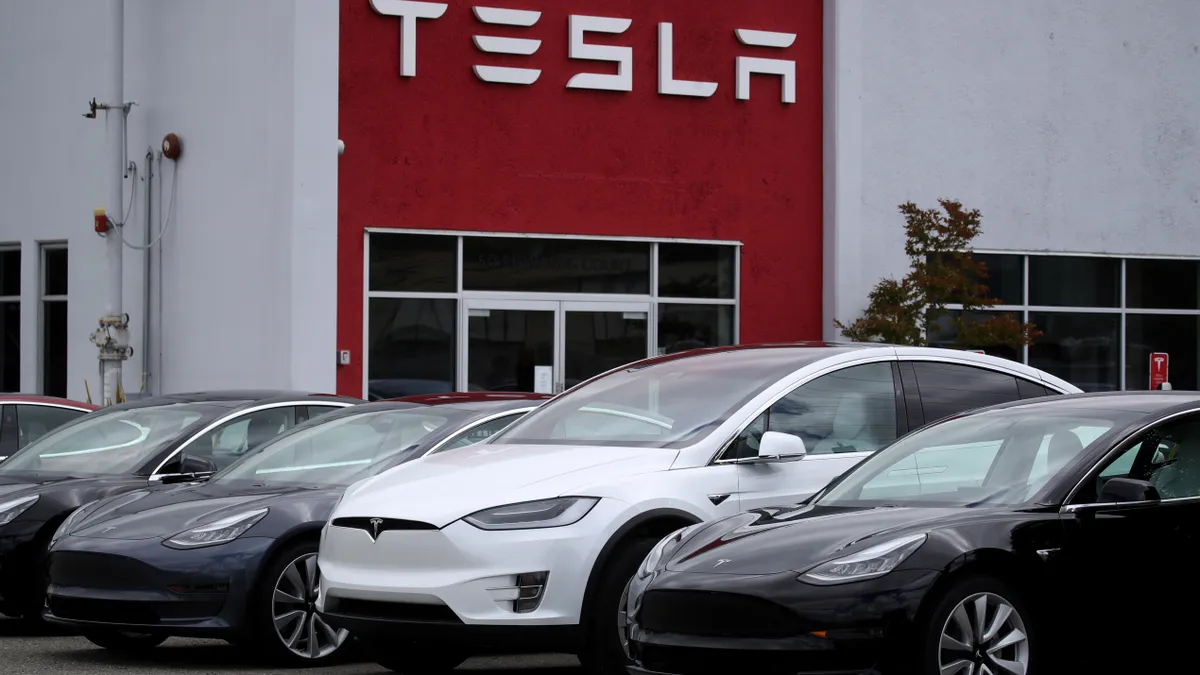Dive Brief:
- Cars using self-driving technology, also called advanced driver assistance systems, were involved in 367 crashes over the course of more than 10 months, six of which were fatal and five in which serious injuries occurred, according to newly released data from the National Highway Traffic Safety Administration.
- Tesla vehicles, many of which are equipped with its Autopilot feature, were involved in 75% of the crashes in the report, totaling 273 crashes from July 2021 to May 15, 2022, far more than any other car manufacturer.
- NHTSA Administrator Steven Cliff said in a statement that new vehicle technologies have the potential to help prevent deaths and reduce crash severity, but the data will allow the federal agency to “better identify any emerging risks or trends and learn more about how these technologies are performing in the real world.”
Dive Insight:
As vehicles equipped with advanced driver assistance systems continue to hit U.S. roadways, federal regulators are grappling with how to regulate the emerging technology, while car manufacturers and technology companies are working to improve their safety.
NHTSA last year ordered car manufacturers and operators to report crashes involving vehicles that are equipped with SAE level 2 advanced driver assistance systems, which automate steering and speed but still require the human driver to remain fully engaged at all times. Such features, including lane-centering assistance and adaptive cruise control, are common in many new vehicles.
The federal agency had launched an investigation into Tesla’s Autopilot system following several crashes, in which Tesla vehicles struck emergency vehicles. According to the New York Times, there are about 830,000 Tesla cars in the U.S. that are equipped with Autopilot or other driver assistance technologies.
Behind Tesla, the manufacturer with the next highest number of vehicles equipped with level 2 driver assistance systems that were involved in crashes during the 10-month period was Honda with 90. Other manufacturers recorded 10 or fewer crashes. In total, NHTSA has collected data on 392 crashes involving level 2 vehicles — 25 of which occurred before July 2021 or had no recorded incident date.
It is unknown what a large number of the vehicles crashed into, but at least 116 were with another vehicle, including two first responder vehicles, while one struck a cyclist and three hit pedestrians.
During the same period, the more advanced automated driving systems, that are still being developed and tested on roadways, were involved in 130 crashes, only one of which was known to have resulted in a serious injury.
NHTSA in its release of the data stressed there were important caveats and limitations to the data that should be considered. Some car companies, for instance, can report data quicker than others because their vehicles are equipped with telematics capabilities. Consumer complaints are the second-largest source of level 2 incidents. The data also doesn’t factor in vehicle miles traveled or the number of cars that a manufacturer had deployed using that technology, not allowing the agency to compare the safety of manufacturers against one another.











